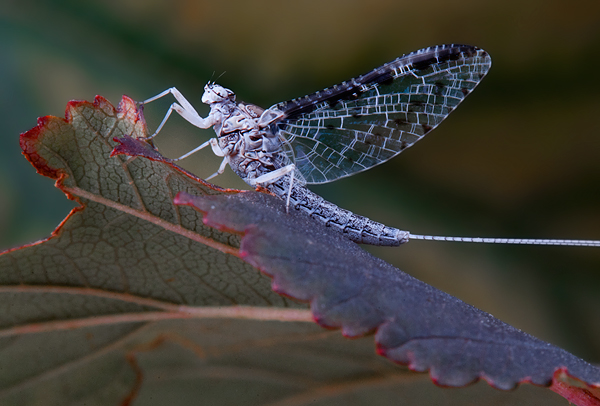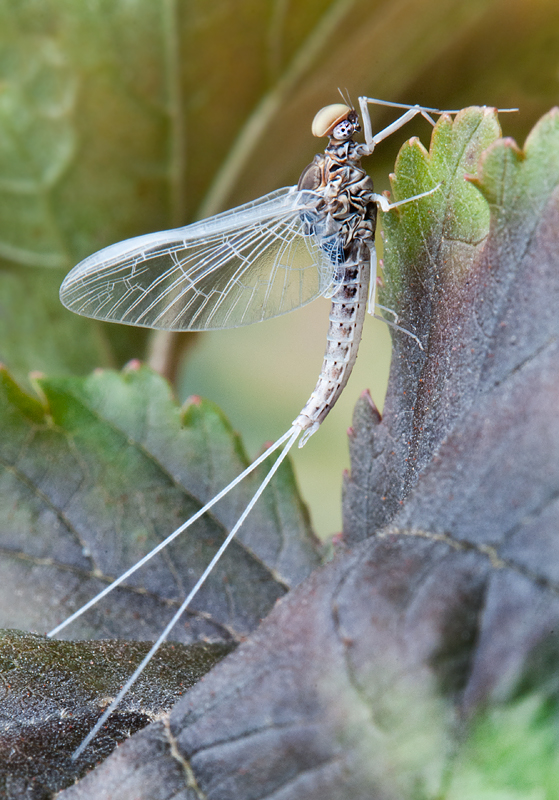These buggers are small. Not midge small, mind you, but nothing like the morbidly obese terrestrials of Summer.
Photographing these iconic little insects begs for a macro lens, but there's a problem: This type of glass produces a reproduction ratio of 1:1 (or actual size). With diminutive subjects, that's great for images that emphasize the insect in its broader surroundings.
What if you actually want a mayfly to be the main event, and fill a more significant portion of the frame? You can certainly crop your image as a means of bringing the viewer closer, but often there isn't enough detail for a bug to stand on its own 6 legs as an engaging portrait.
The other option is magnification - a method known as super macro photography. There are a large number of techniques that can be used to achieve larger-than-life insect images. Tools of the trade include reversing rings, teleconverters, close-up lenses, extension tubes, bellows, and enough accessories to roughly equal the mass of a neutron star.
If you talk to 10 blokes who delve into super sizing, you'll find 10 different ways of shooting. Using a $7 reversing ring, you can jump in feet first with a 50mm conventional lens and a Google search on reverse macro. One thing is certain: It's a technique-intensive specialty. No piece of equipment is going to do the deed without some patience and a lot of practice. Still, it's fun to dial in the detail on trout food once in a while.
Nikon D300
A Variety of Super Macro Accessories











Terrific photos.
ReplyDeleteThanks JGR - mayflies are actually pretty spectacular when you get all up in their grill.
ReplyDeleteYes, users want to fulfill 70x wagering when claiming the welcome bonus. The web site has an eCOGRA certification for high-security requirements concerning its video games and honest outcomes. You could need to take a look at|try} extra software program, similar to Cash And The City, Treasure Island Jackpots or Jackpot Capital, which could be just like Jackpot City. When 토토사이트 you login first time using a Social Login button, we collect your account public profile info shared by Social Login supplier, based on your privacy settings. We additionally get your email tackle to routinely create an account for you in our web site.
ReplyDelete